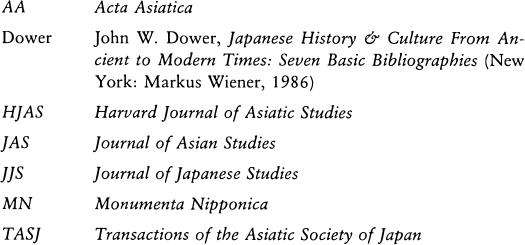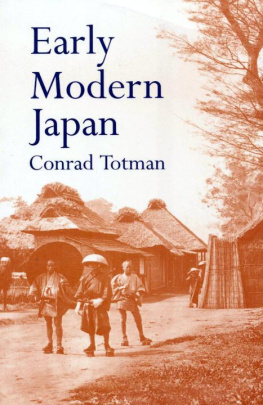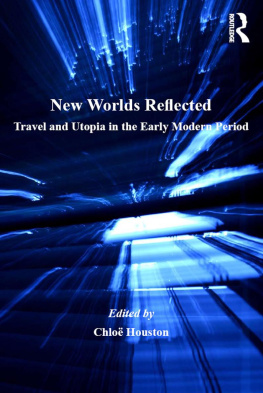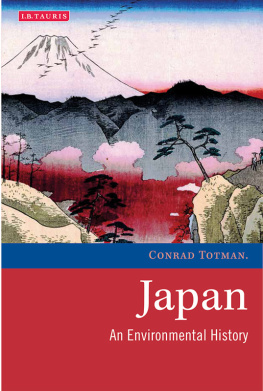

A

Book
The Philip E. Lilienthal imprint honors special books in commemoration of a man whose work at the University of California Press from 1954 to 1979 was marked by dedication to young authors and to high standards in the field of Asian Studies. Friends, family, authors, and foundations have together endowed the Lilienthal Fund, which enables the Press to publish under this imprint selected books in a way that reflects the taste and judgment of a great and beloved editor.

Conrad Totman



Dedicated to T. O. and Edie, Jean, Helen, Maida, and my other lifelong friends in Amherst

ix
xi
xxv
37101233397540
Appendixes

MAPS
1. Eastern Asia xiii
2. Ezo xiv
3. Japan xv
4. Provinces of Tokugawa Japan xvi
5. Castle Towns Mentioned in Text xvii
6. Kanto Plain xviii
7. Tokai Region xix
8. Kinai Basin xx
9. Kyushu xxi
10. Edo xxii
11. Kyoto xxiii
FIGURES
1. Kumamoto Castle 64
2. Unkoku Togan, Landscape 84
3. Exterior of the Hosokawa mansion in Edo 109
4. Dejima, ca. 1875 115
5. Highway and Barrier in Sagami 154
6. Courier Conveying Message Container 156
7. Kano Tan'yu, Confucius at the Apricot Altar and His Two Disciples 191
8. Yamamoto Soken, Birds and Flowers of the Twelve Months 193
9. Tawaraya Sotatsu, Waves at Matsushima 196
10. Ogata Korin, Waves at Matsushima 197
11. Kambun Master, Courtesan and Courtier 208
12. Hishikawa Moronobu, Flirting Lovers 210
13. Hishikawa Moronobu, Scenes from the Yoshiwara Pleasure Quarters 212
14. Vista of Tile Roofs in Osaka 298
15. Fluctuations in Bakufu House Income from Land Taxes, 1710-1840 306
16. Incidence of Peasant Uprisings, 1607-1867 322
17. Sakawa River Crossing, Tokaido in Sagami 326
18. Kabuki Stage, ca. 1780 388
19. Okumura Masanobu, Interior View of the Nakamura-za Theater in Edo 392
20. Shiba Kokan, Shore at Shinagawa 412
21. Ema Saiko, Landscape 426
22. Highway Scene with Samurai at Namamugi in Sagami 544

The following abbreviations are used in the footnotes and bibliographical essay.


Map 1. Eastern Asia ca. 1800.

Map 2. Ezo.

Map 3. Japan.

Map 4. Provinces of Tokugawa Japan.

Map 5. Castle Towns Mentioned in the Text.

Map 6. Kanto Plain.

Map 7. Tokai Region.

Map 8. Kinai Basin.

Map 9. Kyushu.

Map 10. Edo.

Map 11. Kyoto.

Just three centuries later, in 1868, Kyoto was seized again, this time by leaders of powerful baronial armies from Satsuma and Choshu in southwest Japan. They compelled the boy emperor Meiji to designate their forces imperial armies with the duty of crushing the hapless thirty-year-old Tokugawa Yoshinobu, fifteenth-and final-shogun of the Tokugawa lineage.
Between those two moments of imperial puppetry the people of Japan left a 300-year record of agonies and accomplishments that is instructive even today. Commonly called Japan's early modern period, these three centuries divide, in largest terms, into a century and a half of extraordinary growth and a century and a half of equally extraordinary stasis. The ingredients of that growth strike us as familiar because they generally conform to our notions of "progress," "development," or "social growth": the polity was elaborated, scholarly and other higher cultural production flourished, the human population grew, cities and towns proliferated, economic output and material consumption rose, and exploitation of the ecosystem intensified enough to make all that possible.
The ingredients of stasis are more complex. In some sectors, they constituted near-absence of growth, but mostly they involved processes of displacement and transfer, with "more" in one area being offset by "less" in another. Overall, Japan's human population almost ceased to grow after about 1720, but in regional terms a near-balance was achieved, which involved population reduction in some regions, particularly the northeast, that offset continuing growth elsewhere, mostly in the southwest. Artistic and literary creativity continued, with an array of new genres developing, while others atrophied. The increased affluence of some social strata was offset by losses in others. To characterize the latter half of the early modern era in terms of stasis is not, moreover, to deny areas and eras of absolute growth, and one of our tasks will be to explore the types, timing, and logic of such growth.
Next page
































